#FeederWatch
Text


#EarlyTrespassing
Yesterday morning wasn't the right time, neither the right moment to trespass a Coyote territory.
At first sight we've been clearly spotted by this couple of Coyote. Usually they don't care much about humans as long as we're not trespassing their territories in the middle of their breeding season; unfortunately we're just at the beginning of it. Like most wild animals, Coyotes can be easily offended during this time and by any means necessary, will protect their family as well as their hunting territories on which they count on to feed their youngsters. The female seems relatively calm but still cautious of our presence contrary to the male who was agitated, noisy, and didn't seem to be in a mood to socialize with us. ( mindful-hempress )
Sure the fact that we suprised them didn't help the situation. So slowly we decided to leave this area going, backwards.
@BenAdrienProulx
April 11th, 2024
#Early Trespassing#Coyote#Wildlife Need Protection#IUCN#International Union for Conservation of Nature#ECCC#Environment and Climate Change Canada#FeederWatch#Count Feeder Birds for Science#NCC#Nature Conservancy of Canada#Nature Photography#Nature Canada#Wild Bird Photography#Wildlife Photography#Animal Photography#Mountainous Parts of the Northern Hemisphere#Canada#The RavenKeeper
295 notes
·
View notes
Text

Day 3694 - Tracked backyard birds for my weekly FeederWatch count.
3 notes
·
View notes
Text


Get to know your bird organizations:
Cornell Lab of Ornithology
The Cornell Lab provides quite a number of data-driven apps and repositories, with many of the contributions through citizen science (birders like you and me):
eBird (website and mobile app)
This has become the de facto app and website for submitting bird sightings. It's also great for researching birding hotspots all around the world. The website offers a great deal more information and functionality than the app (such as uploading photos to accompany your sightings, and providing you with your own central sightings hub complete with maps), so using them in tandem is the best strategy. All rare sightings are reviewed for accuracy by qualified volunteers.
Merlin (mobile app)
This is the app that gets a lot of press due to its ease of entry to the world of birdwatching. Hit the 'record' button and it will listen for bird calls and suggest species. It does a decent job of that. You can also upload photos of birds to see if they match anything in the database. Note however, that it has developed a bit of a reputation for frustrating ornithologists due to false positives that novices might not catch, suggesting rare birds that wouldn't be anywhere nearby, and thus tainting the eBird data.
All About Birds
Cornell's bird guide; search by species and it will provide a great deal of information. There's a lot of clicking involved (there's an Overview tab, an ID info tab, a Life History tab, a Maps tab), instead of the info being presented on a single scrollable page, but I enjoy their 'Cool Facts' section.
Macaulay Library
This is Cornell's media library (photos, videos, audio). When a photo or audio clip is submitted through eBird, it will then show up here in the archives, along with any additional information that the photographer might have included (e.g., how many are in the photo, is it male or female, is it foraging). The library has been operating since 1929, and has over 60 million pieces of media. The information included in the library helps to power the Merlin app, providing more photographs and audio clips for comparison purposes.
eBird Status and Trends data visualizer
Using the eBird data to track bird population increases and declines, as well as possible geographic shifts. The visualizer provides heat maps superimposed on a globe, and you can hit the 'play' button to see how things shift throughout the year.
Feeder Watch
This is a backyard counting project (in conjunction with Birds Canada) that is roughly the same as eBird, but for bird feeders and backyards. Participants spend two consecutive days per week (or as much as they can) watching to see who shows up, and you can compare your data to your neighbours. The data goes back decades, and you can use a few different visualizations to see trends.
Bird Academy
As Cornell is a university, they offer online classes. They range from the simple (eBird essentials; Free), to the more complex (Ornithology: Complex Bird Biology; $240 USD; 100+ hours to complete).
(Eastern Bluebird photo by @everydayesterday)
#north american birder#cornell lab of ornithology#cornell lab#ebird#feederwatch#macaulay library#merlin#birding#birdwatching
2 notes
·
View notes
Text

[Gray Catbird; photo by Laura Frazier]
For my North American friends, registration is open for Project FeederWatch for 2023-24.
This is a program with The Cornell Lab of Ornithology and Birds Canada where you track which birds have been showing up in your yards throughout Winter, tracked from November-April.
Just like eBird counts, this crucial information enables scientists to piece together accurate population maps, which helps enable the monitoring of possible species decline and shifts in range.
It costs $18 to register, but that includes a poster and a calendar, and helps to support a good cause.
1 note
·
View note
Text
Cornell Lab's Common Feeder Birds from FeederWatch
#Common Feeder Birds - FeederWatch#The Cornell Lab#Birding#Bookshelf#Tumblr Staff Has Ruined Links Now And I Hate Them For It#Prairie Magic & Medicine
2 notes
·
View notes
Text
Get a load of the mourning dove I saw this morning on the Cornell FeederWatch
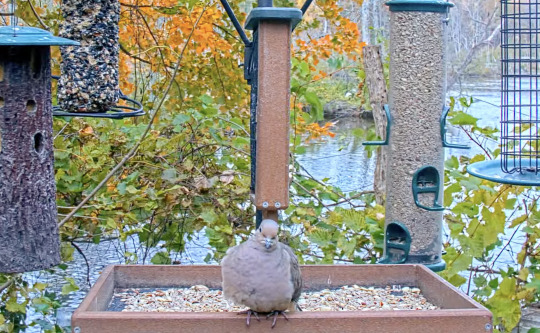
16 notes
·
View notes
Text
Red bellied woodpeckers rule our feeder. They aren’t aggressive at all, but when they land, everyone else runs off, so to speak.
15 notes
·
View notes
Text
having lunch with my friends (the birds on the Cornell FeederWatch Cam)
9 notes
·
View notes
Text
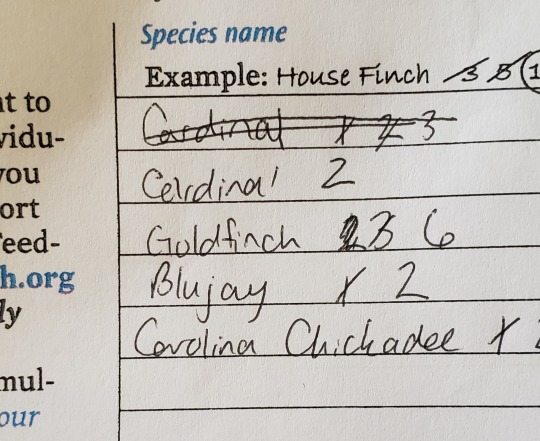
I was training to gather data for Project FeederWatch at work, a citizen science project that tracks winter bird migration by counting populations at feeders, and I realized I spelled bluejay without the e. as in the name of my beloved mutual @blujayonthewing
#the dawning of the age of an aquarist#(this is definitely not an aquarist duty but at this point I'm working with like three different departments at the museum)
16 notes
·
View notes
Text

Towards the end of last year, my wife and I put up a bird feeder outside our bedroom window. We wanted to participate in Project FeederWatch as well as just see the cute birdies.
It took until early February before birds actually discovered it and started coming to our feeder to snack, and soon enough we had a regular ensemble of local New England birds, including Black Capped Chickadees, Downy Woodpeckers, and the above pictured White-Breasted Nuthatch.
Eventually we even installed some little CCTV cameras so we can watch them in the morning from bed, and eventually hope to live stream them to YouTube.

Unfortunately we had to take it down about a week ago, due to a finch showing signs of House Finch Eye Disease. Luckily the finches moved on and we were able to put it back up (while carefully monitoring and after a thorough cleaning!)
Today I had some free time so I brought up my 300mm lens to take some super close up pictures of the birds as they snacked. Both are uncropped vertically. Mostly just playing around so nothing special.
5 notes
·
View notes
Text
Does anybody know a good site to share bird pictures on? I feel like I'm spamming my friends and I don't wanna go back to flickr, I posted a few on feederwatch but it isn't really community-driven, and I looked into eBird but it seems like you have to share fairly specific regions, which would be my house, so I'm not super into that (I know it's for science, just not wanting this publicly), but I'm not sure where else besides, like...going back to flickr?
4 notes
·
View notes
Text
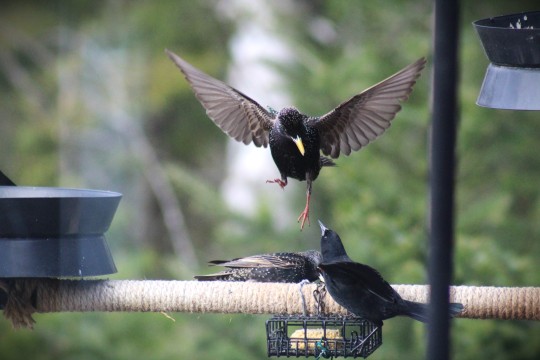


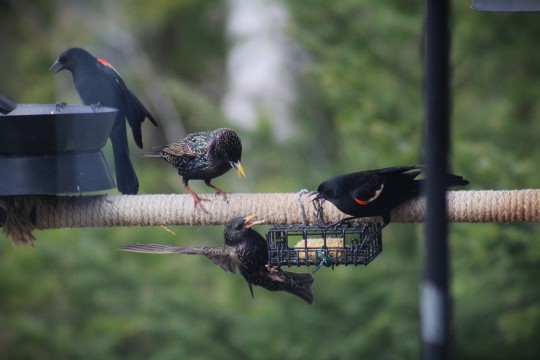




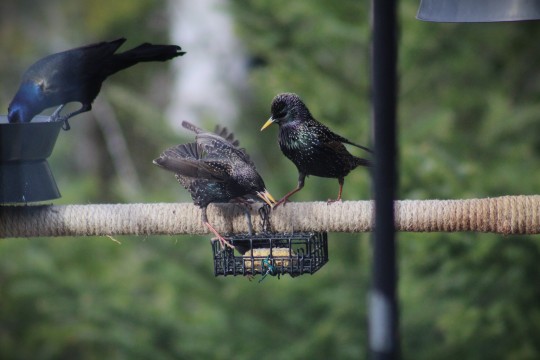


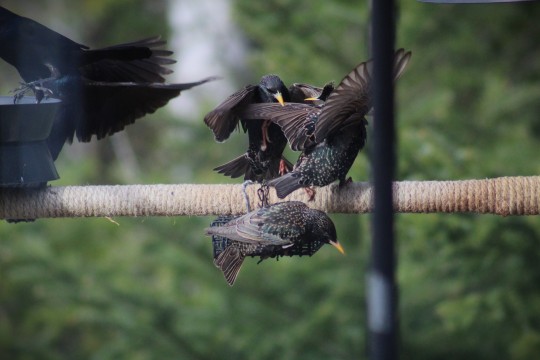

#EuropeanStarling
So this morning I captured on camera (thru my bay window) some European Starlings at their best … just for the fun of it. Here they are Terri
@BenAdrienProulx
April 19th, 2024.
#European Starling#Wildlife Need Protection#IUCN#International Union for Conservation of Nature#ECCC#Environment and Climate Change Canada#FeederWatch#Count Feeder Birds for Science#NCC#Nature Conservancy of Canada#Nature Photography#Nature Canada#Wild Bird Photography#Wildlife Photography#Animal Photography#Mountainous Parts of the Northern Hemisphere#Canada#The RavenKeeper
295 notes
·
View notes
Text
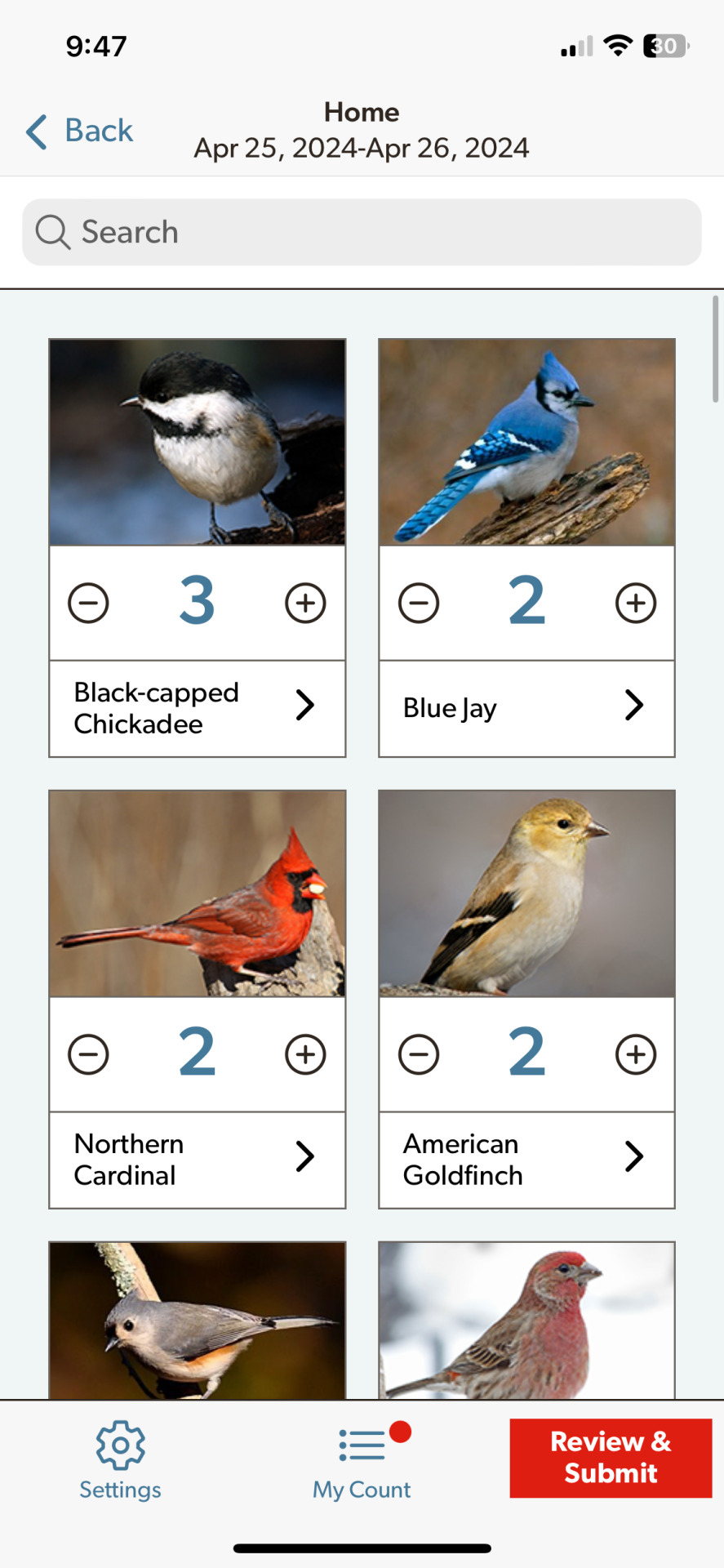
Day 3730 - Submitted my last FeederWatch count for the season.
1 note
·
View note
Text
Sweetgum Tree.
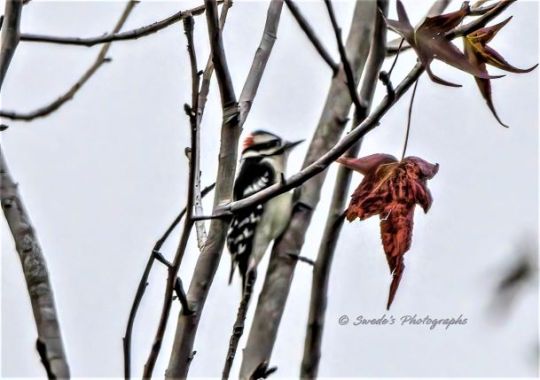
I was looking through my red-bellied woodpecker photographs and I came across some downy woodpecker photos from the fall, misfiled. So, I decided to do the downy instead.
In this photo, the sweetgum tree limbs and are really in focus. The downy woodpecker is not, it is slightly out of focus.
These woodpeckers are small and, so far, I only see them deep in the forest. I've read that they visit feeders but, I haven't seen one.
"Where they occur, Downy Woodpeckers are the most likely woodpecker species to visit a backyard bird feeder. They prefer suet feeders, but are also fond of black oil sunflower seeds, millet, peanuts, and chunky peanut butter. Occasionally, Downy woodpeckers will drink from oriole and hummingbird feeders as well. Find out more about what this bird likes to eat and what feeder is best by using the Project FeederWatch Common Feeder Birds bird list." - allaboutbirds.org
#photo#photography#photographer#birds#birdwatching#birds of north america#birdsphotography#birdlovers#birdphotography#birds nature#birdingphotography#downy woodpecker#bird#bird photography#bird watching#birding#b
10 notes
·
View notes
Text
Someone should do Project FeederWatch with me this year! Basically you just set aside some time to watch what birds come to your feeder throughout the winter. You can do it as much or as little as you want. It is $18 to participate, that covers the cost of running the website, doing stuff with data, and the resources they send you. Starts on November 1st. US and Canada.
3 notes
·
View notes
Text

feederwatch cam is crazy rn so many grackles and mourning doves and red winged blackbirds and bluejays
5 notes
·
View notes